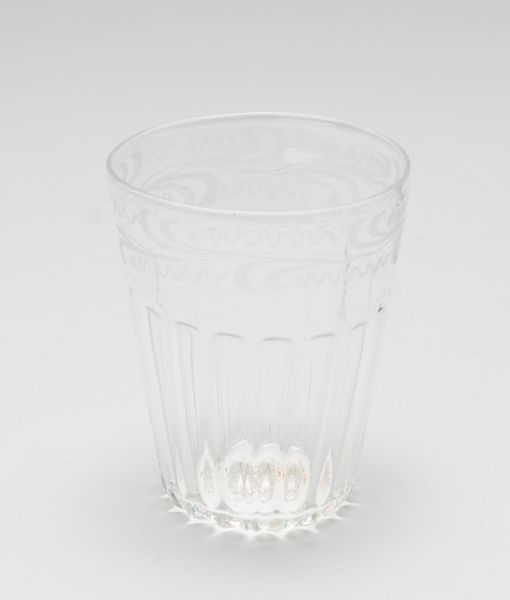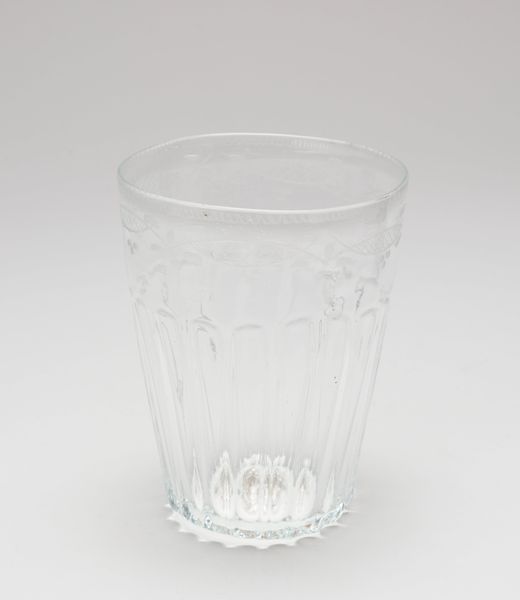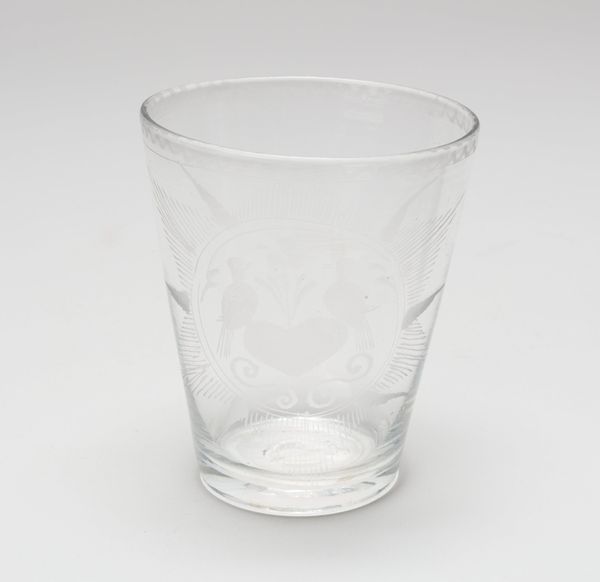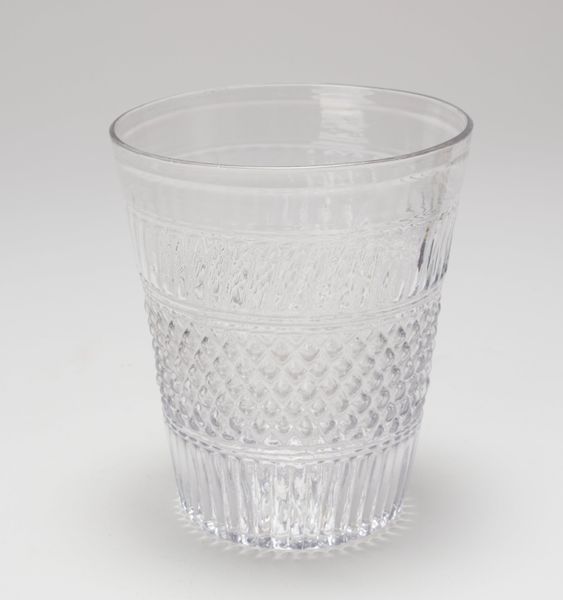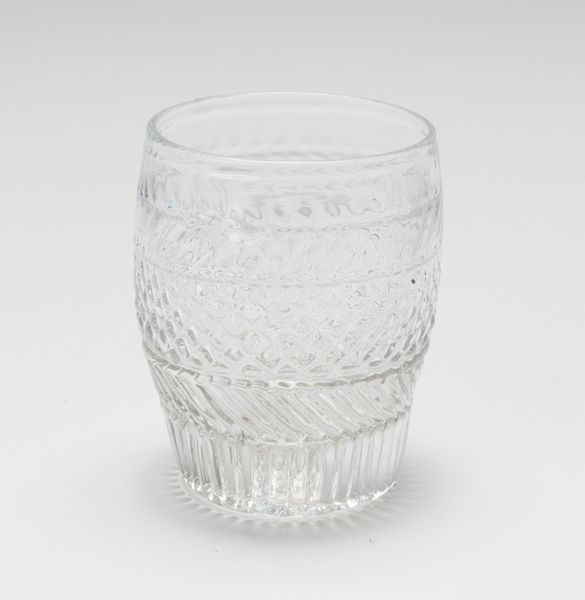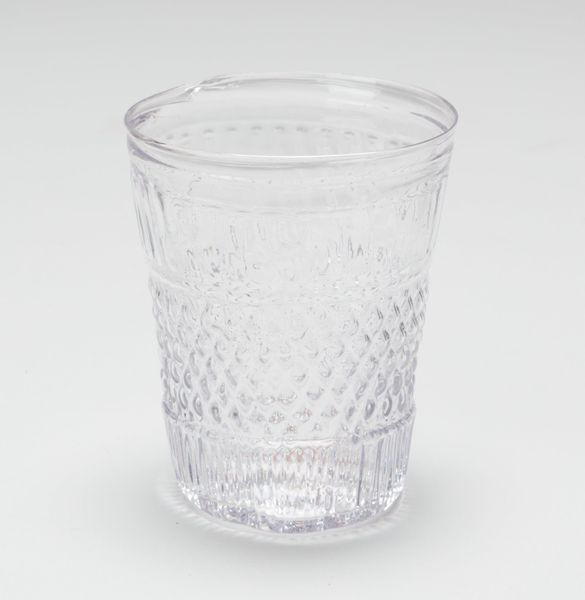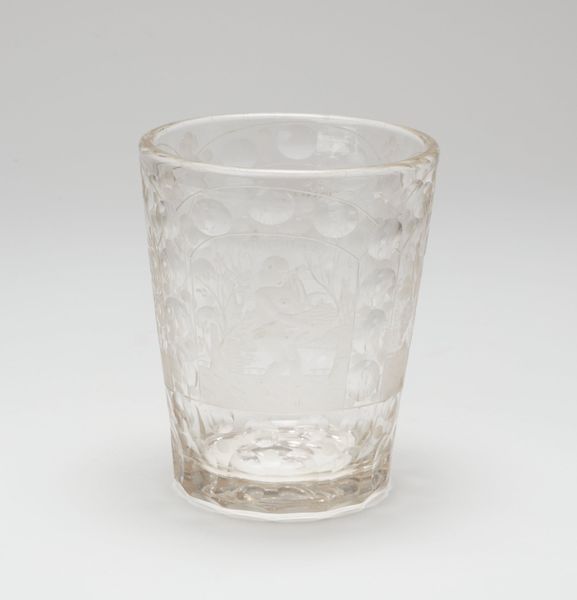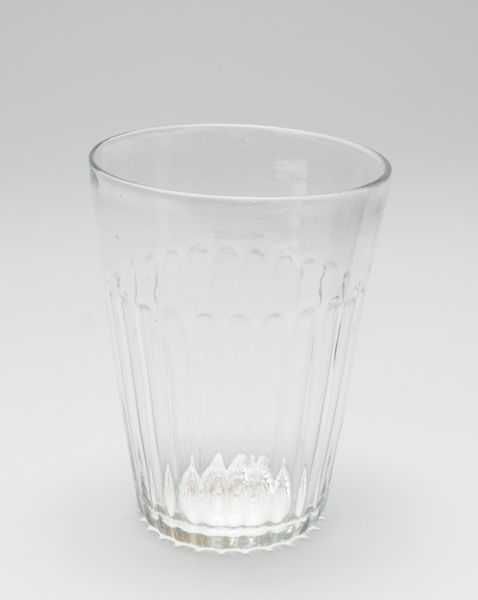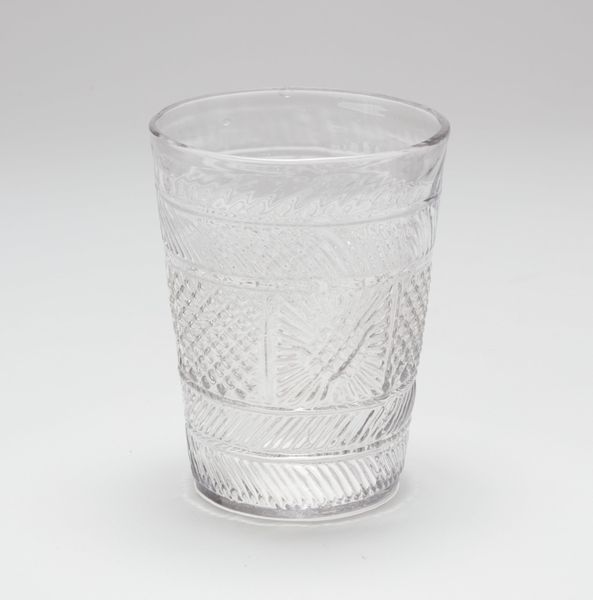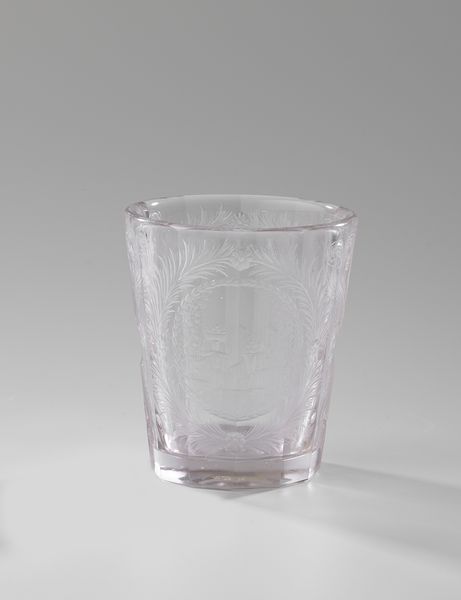
photography, glass
#
culinary art
#
photography
#
glass
Dimensions: 3 3/4 x 2 3/4 x 2 3/4in. (9.5 x 7 x 7cm)
Copyright: Public Domain
Editor: Here we have an 18th- or 19th-century glass water glass from an anonymous artist. It’s… unexpectedly beautiful for something so utilitarian. What can you tell me about it? Curator: Well, it’s a seemingly simple object, but think about the means of production at the time. The glassmaking process itself—the raw materials, the furnaces, the skilled labor involved in blowing and shaping the glass. Each of these represents a certain level of craftsmanship and would signify social status. Editor: So it’s not just about drinking water; it’s about… labour and resources? Curator: Exactly! Consider also the design. Who was designing these glasses? Were they individual artisans, or were workshops beginning to standardize production? The etched patterns could be from repeated moulds; what does it communicate? Were designs driven by wealthy consumers, trickling down to other demographics through broader circulation, or were these created organically through the act of production and necessity? Editor: That makes me think about the access to clean water at that time, and who would have even been drinking from a glass like this. Curator: Precisely! The water glass also speaks to systems of class and privilege. And beyond its initial use, how has its meaning shifted as it becomes an object displayed in a museum? Who consumes this history, and what does it tell us about how we value craftsmanship versus mass production today? Editor: I hadn’t thought about that. Now it seems so loaded. This glass, simple as it is, really embodies a complex network of production and consumption. Curator: It does. Even an object as common as a drinking glass can offer profound insight into the material conditions of its time.
Comments
No comments
Be the first to comment and join the conversation on the ultimate creative platform.
